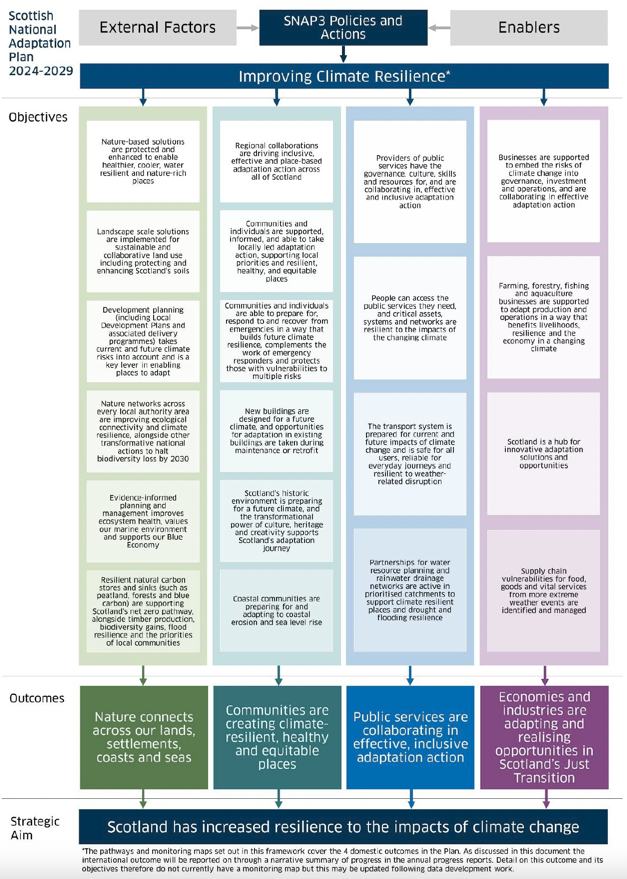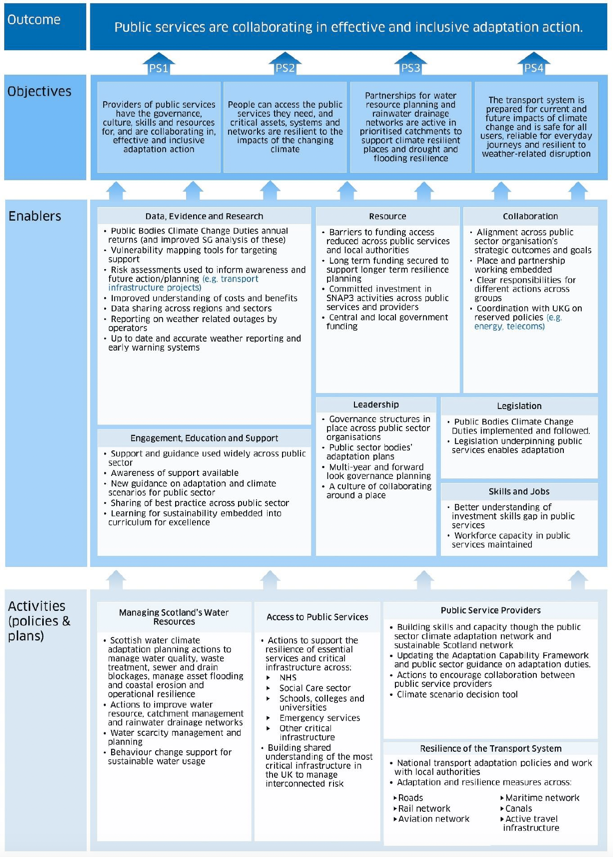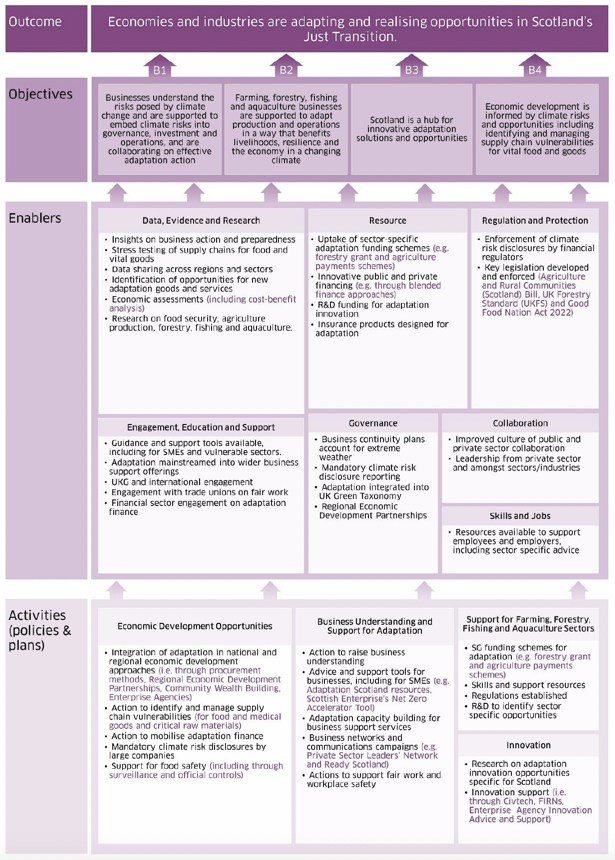Climate change - Scottish National Adaptation Plan 2024-2029: monitoring and evaluation framework
Framework we will use to monitor and evaluate progress in delivering the Scottish National Adaptation Plan 2024 to 2029. The Adaptation Plan sets out the actions that the Scottish Government and partners will take to respond to the impacts of climate change from 2024 to 2029.
Monitoring Maps
We have developed monitoring maps to describe the pathways through which we expect our policy and delivery activities to contribute to the Plan's objectives, outcomes and strategic aim. This follows the approach taken by CCC. The monitoring maps have the following levels:
- Strategic aim: the overall ambition for the Plan. In this case, to 'build Scotland's resilience to climate change' as part of Scotland's set of National Outcomes
- Outcome: what the policies and activities set out in the Plan expect to accomplish in the longer term to bring about increased resilience to climate change impacts in Scotland
- Objectives: the aims of the policies in the plan over its delivery period, which if achieved should lead to progress toward the intended outcomes
- Enablers: enabling factors that overcome barriers to achieving outcomes and objectives in SNAP3. The identified objectives and outcomes will only be achieved if critical enabling factors are in place and barriers removed
- Activities: the activities occurring from the key policies and delivery mechanisms set out in SNAP3 which will deliver the objectives and outcomes and put in place the necessary enablers for these to be achieved
Evidence from both the outcome and objective indicators as well as policy evaluation and wider research over the SNAP3 period will contribute to our understanding of each element of the monitoring map. The monitoring framework and its accompanying indicators will be used to track change in the outcome and indicator elements of the monitoring maps. Policy evaluations will help us to track and understand change in the activities, enablers and contextual factors elements of the maps. Policy evaluation will also link into the outcomes and objectives elements of the maps by helping us understand how individual polices are contributing to changes in the outcomes and objectives.
Wider contextual factors will also be important in understanding what might be influencing progress towards outcomes. These can include changes in climate hazard, population, asset exposure and vulnerability that are largely independent of SNAP3 and wider Scottish Government policy but are important to be aware of in the context of building a more resilient Scotland. For example, an increase in poverty levels in Scotland would impact on population vulnerability to the impacts of flooding. This would, in turn, influence policy efforts to make communities climate-resilient, healthy and equitable as Outcome 2 in the Plan sets out. The contextual factors are highly complex and context specific and are therefore not detailed within each map. When policy areas or stakeholders are using the maps to set out how their individual actions should contribute to particular objectives or outcomes being achieved, contextual factors should be considered and included within evaluations.
A monitoring map has been developed for each of the four domestic level outcome area of the Plan. This reflects the narrative rather than data and indicator based approach being taken at this point to monitor the international outcome. These four individual monitoring maps are accompanied by an overall outcome map describing the pathways of change from objective to outcomes and overall strategic aim. While the monitoring maps present each outcome area in turn and imply a linear relationship, in practice there will often be feedback between different levels and outcome areas. These links and interdependencies are important and a feature of the complex system adaptation sits within. Effective evaluation of policies within the plan will consider all parts of the overall adaptation system and should consider how activities, policies and enablers might interact across all of the monitoring maps. It should also consider any key wider contextual factors not included in the maps which may be important in understanding how and why policies are having intended impacts.
The following pages set out the overall objective and outcome pathways map followed by the monitoring maps for each domestic outcome area in SNAP3. The rest of the document then sets out the approach to gathering evidence which will allow the assessment of how, and to what extent, the elements of the maps are being achieved.





Contact
There is a problem
Thanks for your feedback